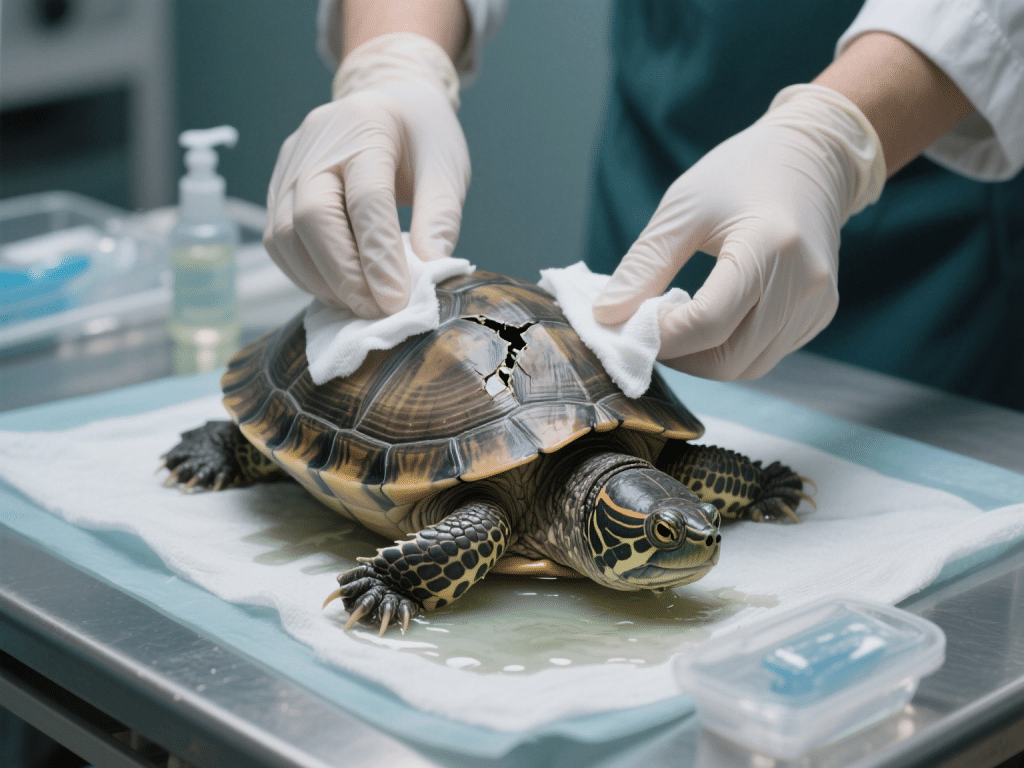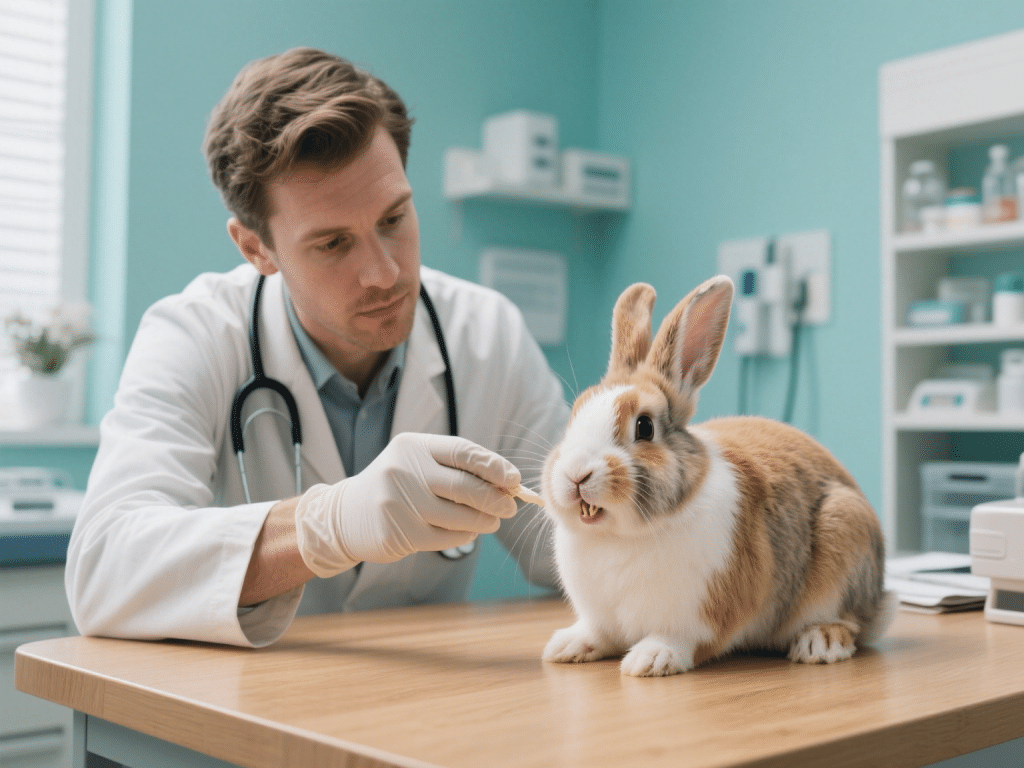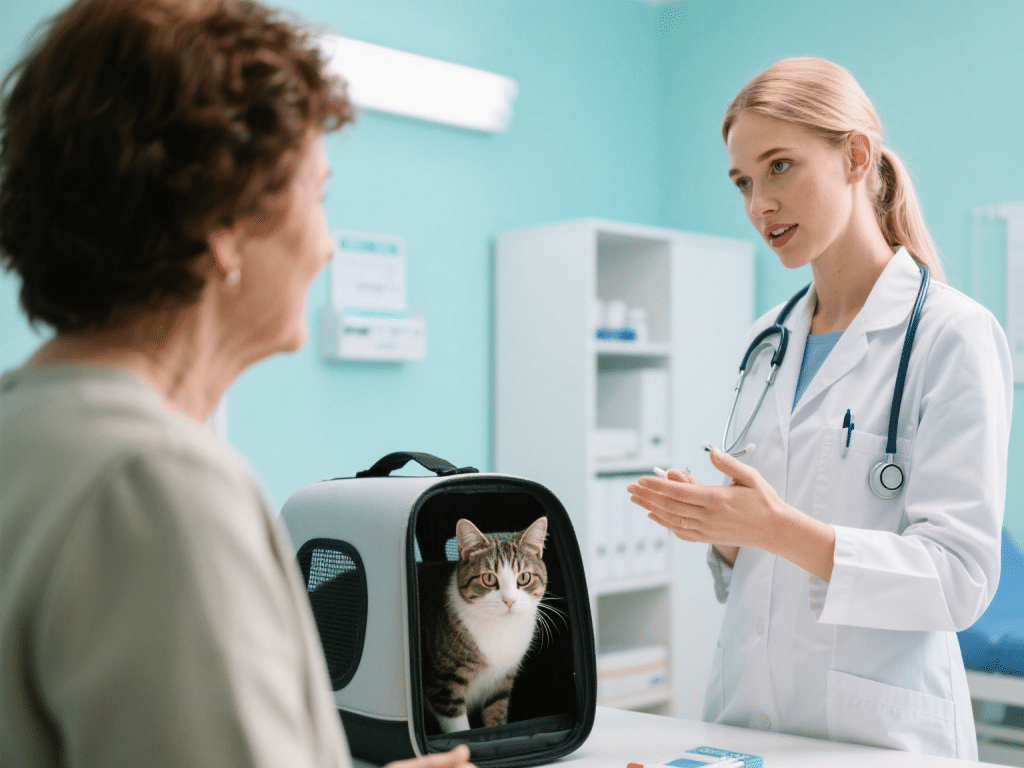
Even the most vigilant turtle keeper may encounter sudden injuries, shell damage, or environmental emergencies. Acting swiftly and knowledgeably can mean the difference between full recovery and irreversible complications. Drawing on protocols from veterinary herpetology textbooks and two decades of field rescue experience, this guide lays out practical first‑aid measures for common turtle emergencies—including wound cleaning, shell repair, heat stress response, and stabilization—empowering you to act confidently when every minute counts.
1. Basic First‑Aid Kit Essentials
Assemble a dedicated turtle first‑aid kit and keep it near the habitat:
Sterile Saline Solution (0.9%): For gentle wound irrigation.
Antiseptic Wipes (Chlorhexidine-based): Use dilute (1:40) solutions to disinfect without damaging tissues.
Veterinary-Grade Gauze & Non-Stick Pads: For dressing shell and skin injuries.
Butterfly Closure Strips & Epoxy Resin Kits: For minor shell cracks.
Styptic Powder: To arrest minor bleeding.
Thermometer & Portable Heating Pad: For temperature-related emergencies.
Heavy‑Duty Gloves & Tweezers: To ensure hygienic handling and debris removal.
2. Treating Minor Shell Cracks & Abrasions
Assessment:
Examine the crack’s depth: superficial scratches often heal unaided; deep fissures exposing the underlying bone/carapace layers require intervention.
Cleaning & Disinfection:
Sedation Not Required for minor injuries—turtles typically remain still when carefully restrained.
Irrigation: Gently flush the area with sterile saline to remove debris.
Antiseptic Application: Dab chlorhexidine solution around the crack—avoid oversaturation that can leach into the bloodstream.
Repair & Stabilization:
Epoxy Shell Repair Kits: Mix a two-part veterinary epoxy and apply over the crack, smoothing edges to match shell curvature.
Butterfly Bandage Strips: Use on straight cracks to prevent widening; seal edges with cyanoacrylate gel.
Aftercare:
Weekly Monitoring: Clean around the repair area and inspect for signs of infection—redness, discharge, or odor.
Water Quality: Keep the turtle in a shallow, filtered tub to minimize exposure to pathogens during healing.
3. Skin Wounds & Abrasions
Types of Injuries: Fighting wounds (bites), cage-induced scrapes, abscesses under skin folds.
Management Steps:
Debridement: Use sterile tweezers to remove dead tissue or gravel particles.
Antibiotic Ointment: Apply a thin layer of veterinary‑approved topical antibiotic (e.g., silver sulfadiazine).
Dressing: Cover with non-stick gauze, secured loosely with wrap—avoid constriction.
Monitoring: Change dressings every 48 hours; watch for swelling or warmth indicating infection.
4. Heat Stress & Thermal Shock
Signs: Panting (gaping mouth), lethargy, excessive basking with body pressed low, bleeding from nares (in severe cases).
Immediate Response:
Move to Cooler Area: Relocate turtle to ambient 75–80 °F shaded environment.
Hydration Soak: Place in shallow tepid water (75 °F) for 10 minutes to lower core temperature.
Electrolyte Support: Offer diluted reptile electrolyte solution via syringe dropper near mouth.
Follow‑Up Care:
Monitor Respiration: Ensure breathing returns to 12–20 breaths per minute.
Re‑establish Thermal Gradient: Verify UVB and heat lamps are correctly distanced (no more than 10 inches above bask platforms) to prevent hotspots.
5. Emergency Stabilization & Transport
For severe wounds, systemic illness, or unknown trauma:
Stabilize on a Rigid Board: Prevent spinal movement if trauma suspected.
Warmth & Humidity: Use portable heating pad set to 80 °F under half the board; mist ambient air lightly to prevent dehydration.
Minimize Handling: Wrap turtle gently in damp cloth; transport to an exotic‑pet veterinarian within 2 hours.
Documentation: Note injury onset time, observable symptoms, and water parameters—providing the vet with clear context accelerates accurate diagnosis.
Conclusion:
Preparedness and prompt, appropriate action are critical when your turtle faces shell damage, skin wounds, heat stress, or other emergencies. By assembling a well‑stocked first‑aid kit, mastering basic cleaning and repair techniques, and knowing when to seek professional care, you’ll safeguard your turtle’s recovery and uphold its long-term health.









Comments on " Essential Turtle First Aid: Wound Care, Heat Stress & Emergency Response" :